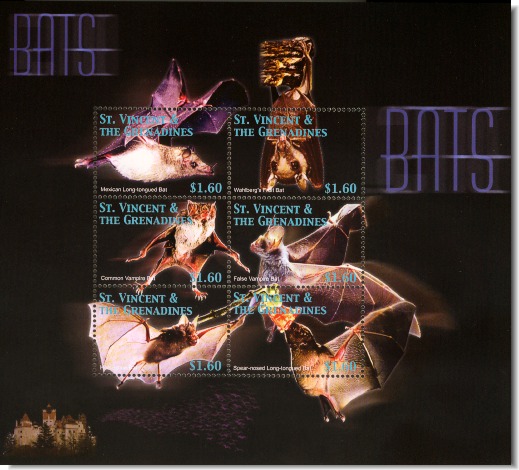Geomyces destructans, a fungal infection of insectivorous hibernating bats is the cause of white-nose syndrome (WNS). This has caused the mass die-offs of bats in Eastern USA and Canada. It is estimated that WNS has killed over 5.7 million bats in eastern North America. Nine bat species are affected and disease is present in 20 U.S. states and four Canadian provinces. Mortality can be up to 100% in the worst affected hibernacula. The Animal Health and Veterinary Laboratories Agency (AHVLA) wildlife group vets, working with bat researchers from the Bat Conservation Trust (BCT) and the Vincent Wildlife Trust, have been investigating cases of fungal infection in hibernating bats in Great Britain since January 2010. 25 incidents in Great Britain were investigated from January 2010 to March 2011. These were all been single or low numbers of dead bats but no samples were received from fungal infections in live bats.
A range of bat species were examined, including greater horseshoe bat (Rhinolophus ferrumequinum), lesser horseshoe bat (Rhinolophus hipposideros), Natterer's bat (Myotis nattereri), Daubenton's bat (Myotis daubentonii), Pipistrelle species, Myotis species and an unidentified bat. A variety of fungi were isolated from white skin lesions and skin fungal growths on these bats, including Rhizopus species, Penicillium species, Scopulariopsis species, Mucor species, Gliocladium species, Paeciliomyces species and Myceliophthora species. All of these were considered to be saprophytic on dead tissue. During the last winter of 2011/2012, three dead bats, a lesser horseshoe (Rhinolophus hipposideros), suspect whiskered bat (Myotis mystacinus) and a brown long-eared bat (Plecotus auritus) and tape samples from another live suspect whiskered/Alcathoe/Brandt’s bat with fungal growths were submitted from four sites. Again only opportunistic saprophytic fungi were isolated, including Rhizopus species, Penicillium species and Cladosporium species. No mass mortalities have reported and G destructans has not been isolated from any of the samples from Great Britain .
G. destructans has been isolated from bats in at least 11 continental European countries including France, Belgium and the Netherlands. It is also suspected to be present in at least four more including Denmark and Turkey. It has been detected in eight Myotis spp., six of which are present in GB, including whiskered, Daubenton’s, Natterer’s, Bechstein’s, Brandt’s and greater mouse-eared bat. However no mass mortality events have yet been reported. The present research suggests that G. destructans was probably introduced to North America from Europe into a naïve bat population. European bat species are likely to have co-evolved with G. destructans and thus have an innate resistance.
Source: Alex Barlow, AHVLA Wildlife Group

- Log in to post comments
